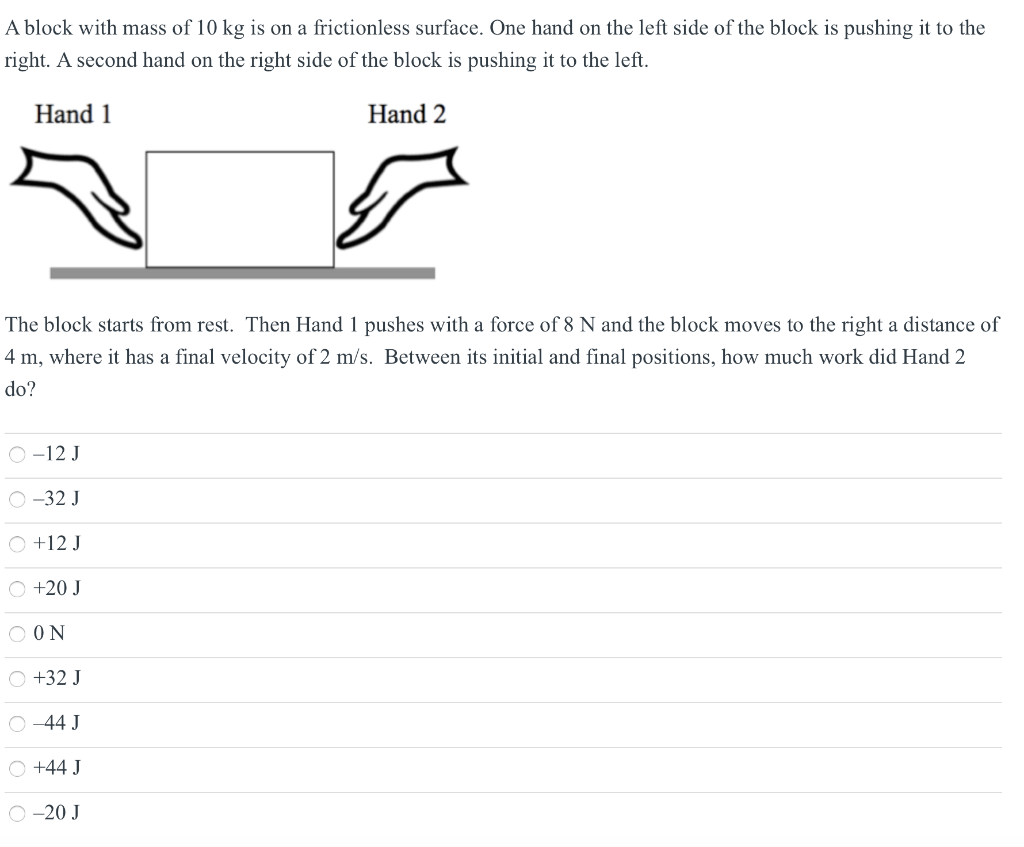A block with mass of 10 kg is on a frictionless surface. One hand on the left side of the block is pushing it to the right. A second hand on the right side of the block is pushing it to the left. Hand 1 Hand 2 The block starts from rest. Then Hand 1 pushes with a force of 8 N and the block moves to the right a distance of 4 m, where it has a final velocity of 2 m/s. Between its initial and final positions, how much work did Hand 2 do? −12 J −32 J +12 J +20 J 0 N +32 J −44 J +44 J −20 J
